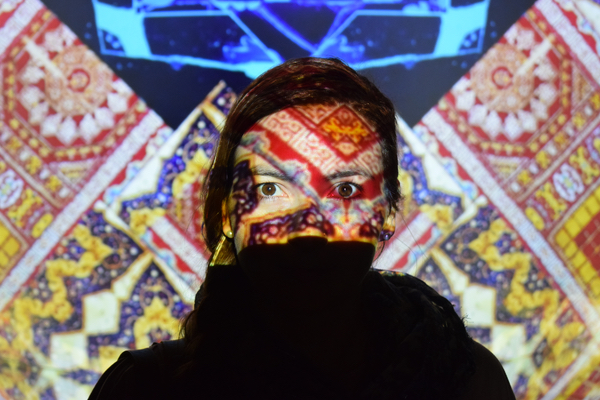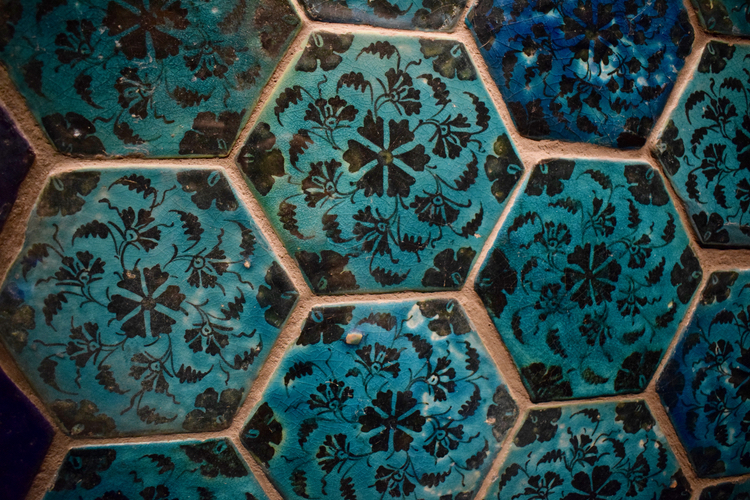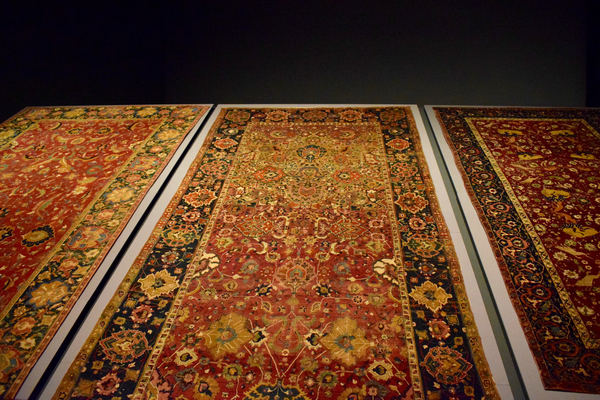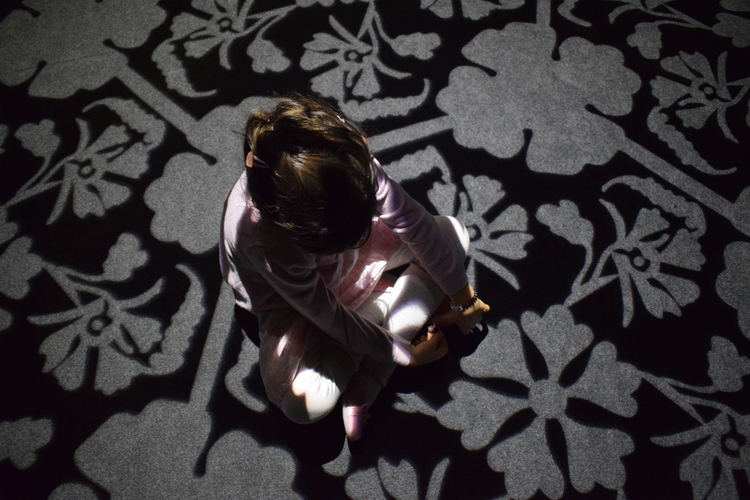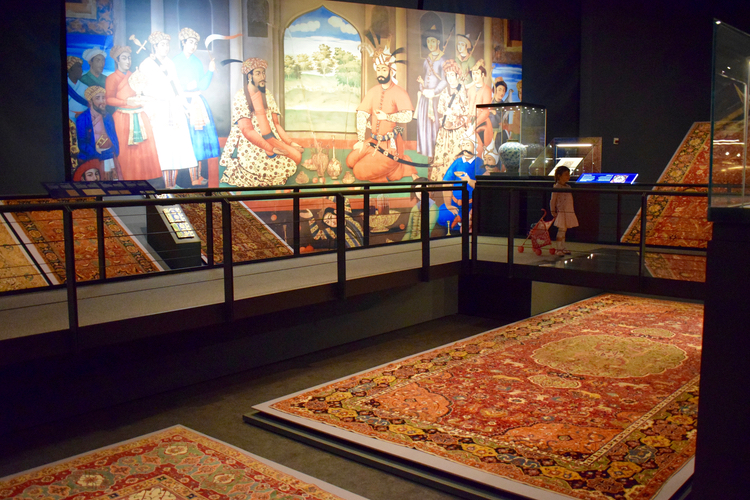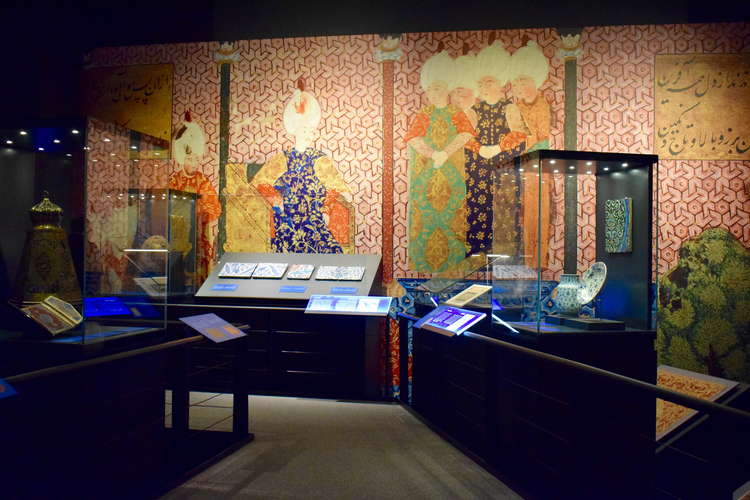My #1 spot in Doha is the Museum of Islamic Art, an exquisite architectural heaven of art, the MIA. Doha welcomed our second year here with “Imperial Threads”, a fantastic collection of motifs and artisans from Turkey, Iran, and India. This exhibit highlights the exchange of artistic and material cultures that developed during the 16th century. A period in which reflected the rise of the Ottoman Empire (also known as the Turkish Empire), was a multinational, multilingual empire controlling most of Southeast Europe, Central Europe, North Africa and the Horn of Africa under the reign of Suleiman the Magnificent. This period denoted a great artistic collaboration within a multicultural environment where regardless of religion, the focus seemed to have been on icons and symbols characteristics of their space.
The exhibit started with a gigantic replica of an interactive kaleidoscope. The highlight for the kids as it interacted with our entire body, as well as reflections of motifs and mandalas around the display.
From there we encountered an enormous map which depicted the area in which these dynasties and empires would settle and establish.
From carpets, to weapons, all the way to jewelry and manuscripts, these objects illustrate the historical and artistic context of the era. One of my design professors from my first typography class – whiled carefully studying the history of visual communication across the world, stated that in fact, ART is men’s first form of communication, indeed it is. This phrase charged with so much historical connotations really stayed with me since my first semester opened with intense classes of History of Art, which started by understanding the meaning of Lascaux, the fist intriguing pictures ever found to be done by men. Looking at these books reminded me of how special the recollection of history is. In this particular book there are charts, diagrams, and what seems to be like an astral chart.
The exhibit started with the Timurid Period in Iran and Central Asia (1370-1507) which set foot to an implicit but visual timeline of artistic components that reflected religion and environmental factors that transitioned into a continuation of artistic practices and methods shared amongst succeeding and bordering dynasties, like the Safavids in Iran (1501-1736), the Ottomans in Turkey (1299-1923) and the Mughals in India (1526-1707).
Due to the essential role the Timurids played in shaping trade and diplomatic relationships, these relationship lead to the introduction of new artistic styles and practices such as semi-nomadic traditions which was mixed with the established Persian culture. The result was, Chinese motifs persisted in the development of this artistic period.
Through mandalas and intricate motifs we were able to see how the animals depicted in the Persian rugs transformed into lotus flowers and dragons towards the 19th century. This was a fulfilling experience that I think, only museums can do.. as they take us through an artistic time-machine.
